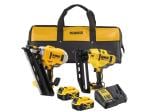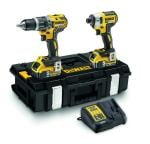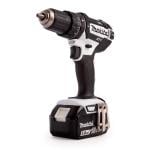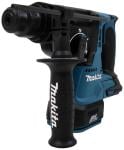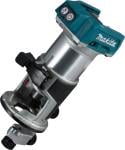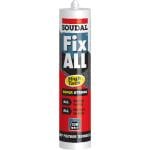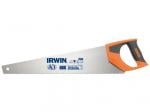Fundamental Tools for Metalworkers and Welders
Metalworking and welding are intricate crafts that require skilled hands and the right set of tools. Whether you are a professional metalworker or a DIY enthusiast, having the fundamental tools is crucial for achieving precise and high-quality results. In this article, we will explore the essential tools every metalworker and welder should have in their arsenal. From cutting and shaping metal to joining and finishing, these tools will empower you to bring your metalworking projects to life.
Introduction
Metalworking and welding involve working with various types of metal, such as steel, aluminium, and copper, to create structures, components, and intricate designs. To accomplish these tasks effectively and efficiently, it is essential to have the right tools at your disposal. Let's dive into the fundamental tools that every metalworker and welder should possess.
Safety Equipment
Safety should always be the top priority when working with metals and welding equipment. The following safety equipment is indispensable for metalworkers and welders:
Welding Helmet
A welding helmet is essential to protect your face, eyes, and neck from sparks, ultraviolet (UV) radiation, and infrared (IR) radiation. It should have a shade rating suitable for the type of welding you are performing.
Welding Gloves
Welding gloves shield your hands from heat, sparks, and metal splatters. They should be made of flame-resistant materials and offer a snug fit for optimal dexterity.
Protective Clothing
Wearing flame-resistant clothing, such as a welding jacket and pants, protects against heat, sparks, and flying debris. It is important to choose garments that cover your entire body.
Safety Glasses
Safety glasses with side shields safeguard your eyes from debris, metal fragments, and harmful light. They should meet the relevant safety standards and have a comfortable fit.
Respiratory Protection
When working in environments with fumes, gases, or dust, respiratory protection such as a respirator or a dust mask is necessary to prevent inhalation of harmful particles.
Measuring and Marking Tools
Accurate measurements and precise markings are crucial for successful metalworking projects. The following tools will assist you in achieving precision:
Tape Measure
A reliable tape measure enables you to measure lengths, widths, and heights accurately. Opt for a sturdy, retractable tape measure with both metric and imperial units.
Combination Square
A combination square serves multiple purposes, allowing you to check right angles, transfer measurements, and mark lines. Look for a square with a stainless steel blade and a built-in level.
Vernier Caliper
A vernier calliper is a precision measuring tool used to determine internal and external dimensions with utmost accuracy. Choose a calliper with a clear and easy-to-read scale.
Marking Gauge
A marking gauge is ideal for making precise markings on metal surfaces. It consists of a fence and a sharp marking point that can be adjusted to the desired measurement.
Center Punch
A centre punch creates a small indentation on metal surfaces, providing a guide for drilling or punching holes. It ensures accuracy and prevents drill bits from wandering.
Cutting Tools
Cutting metal accurately and cleanly is a fundamental aspect of metalworking. The following cutting tools are essential for achieving precise cuts:
Angle Grinder
An angle grinder equipped with a cutting wheel is versatile and suitable for various cutting tasks. It allows you to cut through metal with ease and precision.
Hacksaw
A hacksaw is a hand tool used for cutting metal by hand. It is especially useful for making intricate cuts and shaping metal pieces. Choose a hacksaw with a comfortable grip and durable blade.
Plasma Cutter
A plasma cutter uses a high-velocity jet of ionized gas to cut through metal. It provides clean and accurate cuts and is highly efficient for industrial metalworking.
Metal Shears
Metal shears are designed specifically for cutting sheet metal. They can cut straight lines, curves, and intricate shapes with ease. Look for shears with hardened blades for extended durability.
Nibbler
A nibbler is a versatile tool that cuts through sheet metal in a precise and controlled manner. It is particularly useful for making intricate and curved cuts.
Shaping and Forming Tools
Shaping and forming metal is an essential part of the metalworking process. The following tools will assist you in achieving the desired shapes and forms:
Bench Vise
A bench vice securely holds metal pieces in place, allowing you to shape and form them with ease. Look for vice with sturdy jaws and a stable base for optimal stability.
Metal Files
Metal files are used to smooth rough edges, refine shapes, and remove burrs from metal surfaces. They come in various shapes and sizes, such as flat, round, and half-round.
Hammer and Mallet
A hammer and mallet are indispensable tools for shaping and bending metal. They allow you to apply controlled force and create desired contours and curves.
Metal Bender
A metal bender, also known as a sheet metal brake, enables you to bend metal sheets accurately and consistently. It is a valuable tool for creating precise angles and folds.
Swaging Tool
A swaging tool is used to shape and form metal tubes and pipes. It compresses the metal, allowing you to create flares, joints, and various shapes.
Joining Tools
Joining metal pieces together is a fundamental aspect of metalworking and welding. The following tools are essential for strong and reliable connections:
Welding Machine
A welding machine is a primary tool for joining metal pieces through the process of welding. It generates heat to melt the metal, creating a strong bond when it solidifies.
Welding Clamps
Welding clamps hold metal pieces in place during the welding process, ensuring precise alignment and preventing movement. They come in various designs, such as C-clamps and locking pliers.
Soldering Iron
A soldering iron is used for soldering, a process that joins metal pieces using a low-temperature filler metal. It is commonly used for electronics and delicate metalwork.
Rivet Gun
A rivet gun is used to fasten metal pieces together using rivets. It creates a secure and permanent connection, making it suitable for structural applications.
Bolts and Nuts
Bolts and nuts are versatile fasteners used to join metal pieces. They offer a strong and adjustable connection, allowing for disassembly if necessary.
Finishing Tools
Finishing touches are essential for achieving a professional look and ensuring the longevity of metalwork. The following tools are crucial for the finishing process:
Grinder
A grinder equipped with a grinding wheel or sanding disc is used to remove excess material, smooth rough surfaces, and refine the edges of metalwork.
Wire Brush
A wire brush is effective for cleaning metal surfaces, removing rust, and preparing them for further finishing processes such as painting or coating.
Polishing Wheel
A polishing wheel, combined with polishing compounds, helps achieve a smooth and lustrous finish on metal surfaces. It is commonly used for decorative and aesthetic purposes.
Deburring Tool
A deburring tool is used to remove burrs and sharp edges from metal pieces, ensuring safety and a clean final product. It helps create a professional and polished appearance.
Sandpaper and Emery Cloth
Sandpaper and emery cloth are abrasive materials used for hand sanding metal surfaces. They are available in various grits, allowing you to achieve the desired level of smoothness.
Tool Maintenance
To ensure the longevity and optimal performance of your metalworking tools, proper maintenance is crucial. Here are some essential tips for maintaining your tools:
- Keep your tools clean and free from debris after each use.
- Regularly inspect your tools for any signs of wear, damage, or rust.
- Lubricate moving parts and hinges to prevent friction and corrosion.
- Store your tools in a dry and well-organized manner to prevent damage and misplacement.
- Sharpen cutting tools regularly to maintain their effectiveness and precision.
Conclusion
In the world of metalworking and welding, having the fundamental tools is the key to success. From safety equipment to cutting, shaping, joining, and finishing tools, each plays a vital role in achieving precise and high-quality results. By equipping yourself with these essential tools and maintaining them properly, you can embark on metalworking projects with confidence and create remarkable pieces of art and functionality. Remember, having the right tools and maintaining them properly will empower you to take your metalworking and welding skills to new heights. Embrace the art of metalworking, unleash your creativity, and enjoy the satisfaction of bringing your ideas to life through this versatile and captivating craft.
FAQs
Q: How important is safety equipment in metalworking and welding? A: Safety equipment is crucial in metalworking and welding to protect against potential hazards such as sparks, radiation, and fumes. It ensures the well-being of the worker. Q: Can I use regular tools for metalworking? A: While some regular tools may be suitable for certain metalworking tasks, having specialized tools designed for metalworking will enhance precision and efficiency. Q: What is the difference between welding and soldering? A: Welding involves melting and joining metal pieces together, while soldering uses a lower-temperature filler metal to create connections in electrical and delicate applications. Q: How often should I sharpen my cutting tools? A: The frequency of sharpening depends on the frequency of use and the type of material being cut. Regularly inspect your cutting tools and sharpen them as needed. Q: What is the best way to clean and maintain metalworking tools? A: Clean your tools after each use, inspect them regularly for damage or rust, lubricate moving parts, and store them in a dry and organized manner to ensure their longevity.


